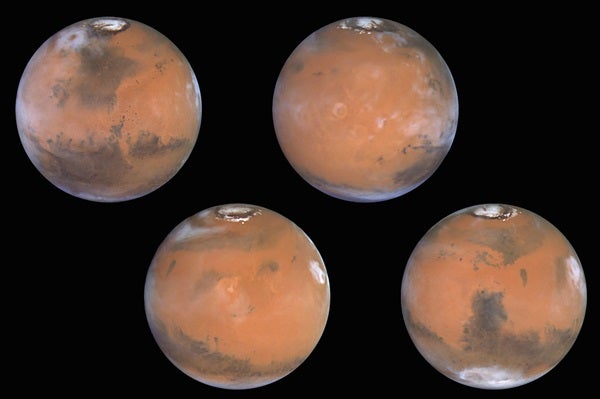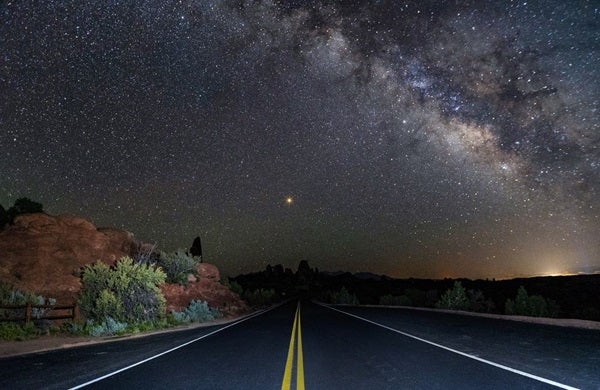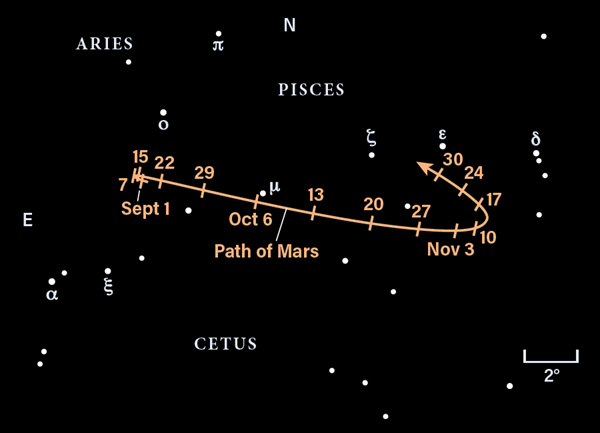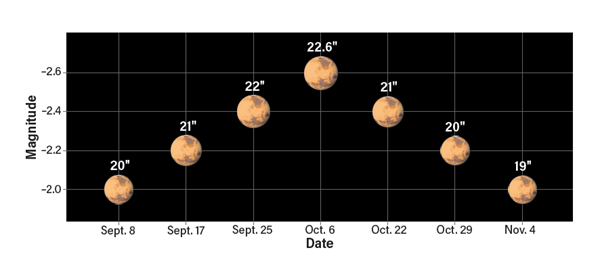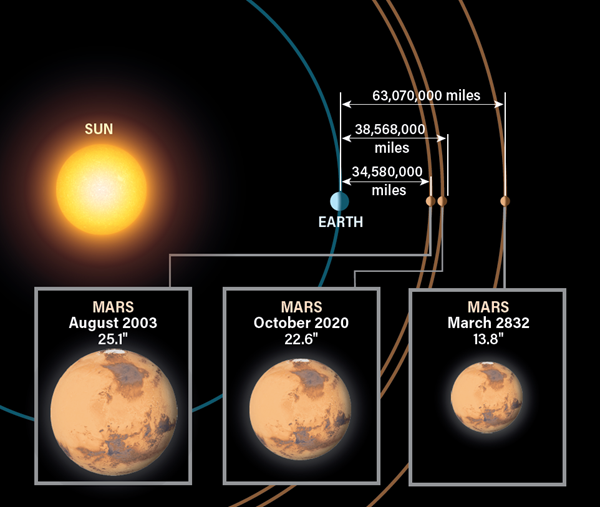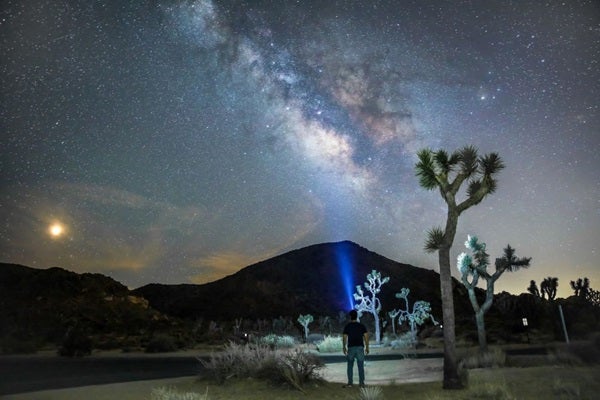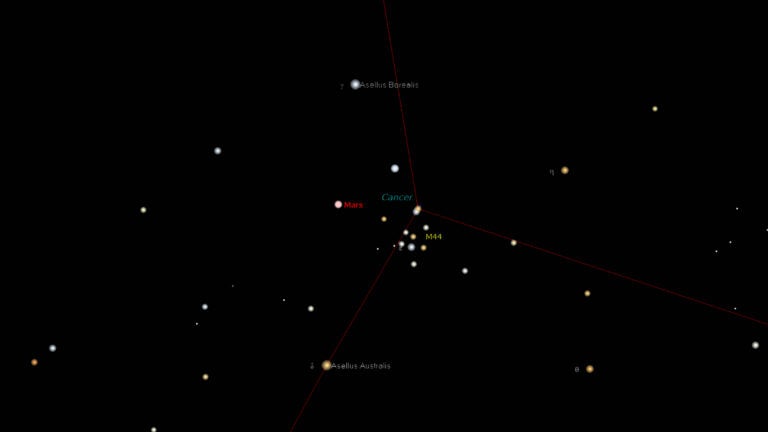Just the facts
The best time to observe Mars is when it is directly across from the Sun from our perspective. Astronomers refer to this as opposition, and the Red Planet reaches it at 7:20 p.m. EDT on October 13. When a celestial object is at opposition, it rises at sunset, is visible all night long, and sets at sunrise. Also, because sunlight is falling on it from behind us, it appears brightest.
Mars actually comes closest to Earth a week earlier, on October 6, at 10:19 a.m. At that time, it will lie 38,568,243 miles (62,069,570 kilometers), or 0.415 of an astronomical unit (AU; 1 AU is the average distance between Earth and the Sun), away from our planet. On this date, Mars will attain its maximum size of 22.6″. (It will appear 22.4″ across at opposition.) In fact, Mars’ will span 20″ or more for nearly two months, from September 4 through November 2. As a comparison, the Full Moon’s average diameter is 1,865″, so the Red Planet’s diameter is, at its largest, 1.2 percent that of the Moon’s.
Mars also will appear 0.2 magnitude fainter than it did two years ago. That said, it still will blaze at magnitude –2.6 from October 5-16. In fact, it will be brighter than magnitude –2.0 from September 7 through November 6; and brighter than Sirius (Alpha [a] Canis Majoris), which is the brightest star at magnitude –1.46, from August 17 through November 20.
Throughout this entire period, Mars will appear within the boundaries of the constellation Pisces the Fish. During most of its orbit, Mars moves eastward through the backdrop of stars. But when Earth overtakes and passes it, the Red Planet appears to travel westward — movement that astronomers refer to as retrograde motion. For this apparition, Mars will be in retrograde from September 9 through November 14.
Mars will be brilliant throughout October, and will appear even more so because it lies in one of the darkest parts of the sky. At opposition, the two closest 1st-magnitude stars will be Aldebaran (Alpha Tauri) and Fomalhaut (Alpha Piscis Austrini). Each will lie 49° away.
Start observing
Astronomers call one martian day a sol. One sol is 37.4 minutes longer than an Earth day. So, if you observe Mars at the same time each night, it will appear to rotate slowly (just 9.11° each day) to the west. This means that in 39½ days, Mars will go through a complete rotation, albeit backward. All its major features will, on one night or another, appear on the planet’s meridian, an imaginary line from north to south that divides the planet in half.
One class of targets observers usually seek on Mars are albedo features. Albedo is a measure of how much light something reflects. These features, therefore, can be bright (high albedo), dark (low albedo), or a mix of both. The most prominent albedo feature is Syrtis Major Planum, a dark high plain that spans some 750 miles (1,200 km), making it the eighth-largest such feature on Mars.
Albedo features are definitely worth searching for and spending serious time on. But if you have your scope pointed at Mars and a non-astronomy family member or friend wants to have a look, the one thing you can point out and be sure they’ll see is the South Polar Cap (SPC). And on October 13, Mars’ south pole has an advantageous 21° tilt toward Earth.
Temperatures fluctuate widely at Mars’ poles, creating two types of caps: residual and seasonal. Residual caps are permanent and are made mostly of water ice. Seasonal ice caps are composed of mostly dry ice (frozen carbon dioxide) and some water ice. As one pole tilts toward the Sun during the martian summer, the seasonal cap sublimes (changes directly from solid to gas), which allows for the formation of ground frost and thin cirrus clouds. The residual cap at Mars’ south pole spans 200 miles (320 km).
Quality time
Once every 26 months, the Red Planet reaches opposition. But not all oppositions are equal. Some occur when Mars is near its farthest point from the Sun, and others, like this one, occur when it’s much closer.
And although Mars will appear at its biggest and brightest on October 6, it will look nearly as good two weeks before to two weeks after that date. That gives you ample time to revisit the planet through your scope and follow its rotation, looking for any changes in its albedo features.
And best of all, you don’t even need a dark sky to enjoy what Mars has to offer. Although, I do wish you a clear and steady one.

